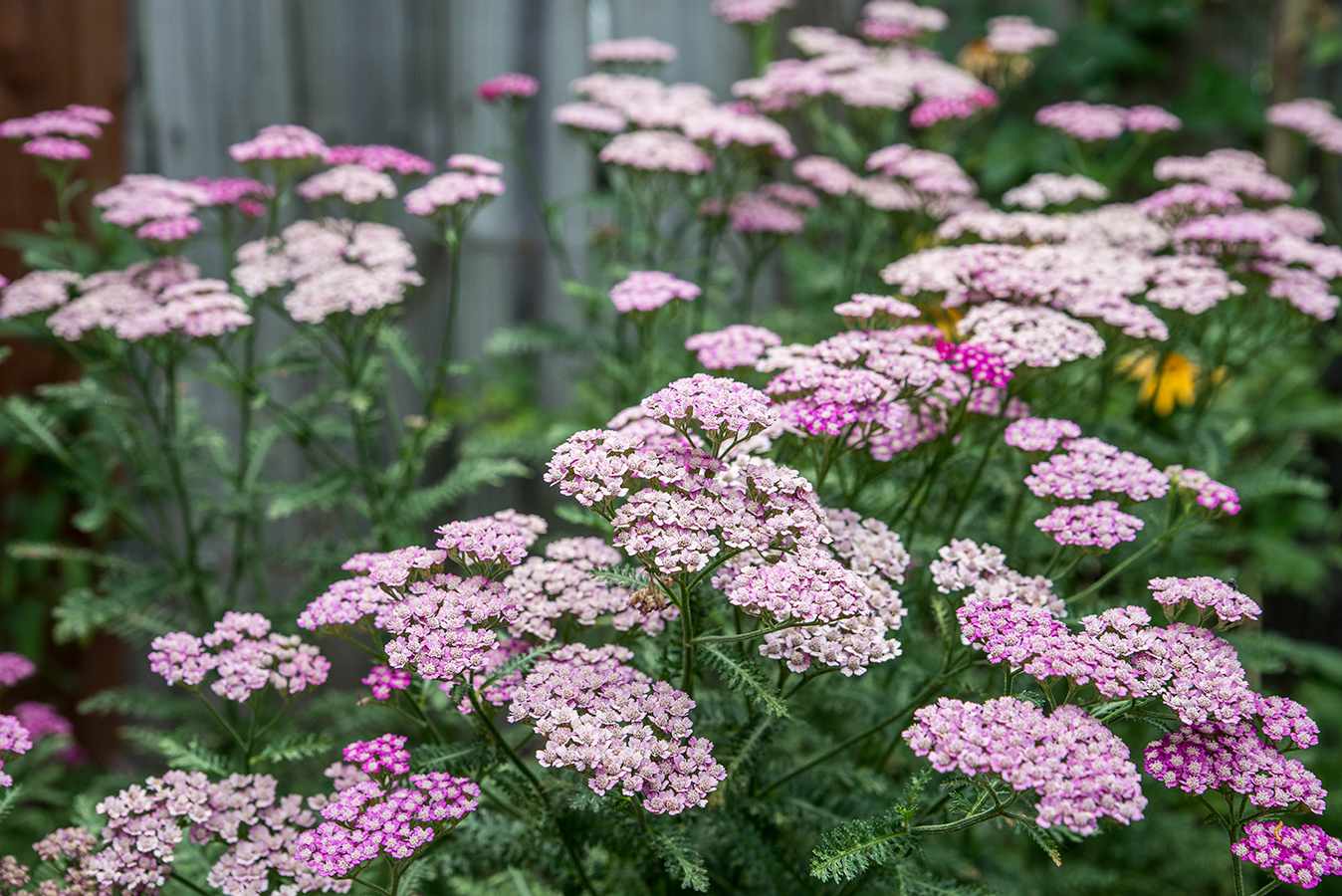
Achillea, commonly known as yarrow, is a fascinating perennial herb that has captivated gardeners and plant enthusiasts for centuries. With its delicate, feathery leaves and clusters of vibrant flowers, Achillea adds a touch of beauty and charm to any landscape.
But there’s more to Achillea than meets the eye. This incredible plant has a rich history, diverse medicinal uses, and a host of interesting characteristics that make it truly captivating. Whether you’re a seasoned gardener or simply have an interest in plants, discovering these intriguing facts about Achillea will surely pique your curiosity and deepen your appreciation for this remarkable herb.
Key Takeaways:
- Achillea, also known as yarrow, is a diverse and resilient plant with a rich history of medicinal use, attracting pollinators, and offering a wide range of colorful flowers. It’s a captivating addition to any garden!
- With over 100 species, Achillea’s stunning flowers, aromatic foliage, and culinary uses make it a delightful and low-maintenance choice for gardeners. Its cultural significance adds an extra layer of enchantment to this extraordinary plant.
Achillea is a member of the Asteraceae family.
Achillea, commonly known as yarrow, belongs to the Asteraceae family, which also includes other well-known plants like sunflowers and daisies. This family is characterized by its composite flowering heads, consisting of many small individual flowers.
The genus name ‘Achillea’ is derived from Greek mythology.
Achillea is named after the Greek hero Achilles, who is said to have used the plant to heal the wounds of his soldiers during the Trojan War. The medicinal properties of Achillea have been recognized for centuries.
Achillea is native to temperate regions of the Northern Hemisphere.
Achillea can be found in various habitats, including meadows, forests, and grasslands, in Europe, Asia, and North America. It has adapted to diverse climates, from the Arctic to hot deserts.
There are over 100 known species of Achillea.
The genus Achillea is incredibly diverse, with more than 100 recognized species. These species vary in their appearance, ranging from low-growing ground covers to tall, upright plants.
Achillea has a long history of medicinal use.
Achillea has been used for its medicinal properties for centuries. It is believed to have anti-inflammatory, antimicrobial, and wound-healing effects. It has also been used to relieve digestive issues and menstrual cramps.
Achillea flowers come in a wide range of colors.
The flowers of Achillea can be found in various shades of white, yellow, orange, pink, and red. This diversity of colors adds to the plant’s aesthetic appeal and makes it a favorite among gardeners.
Achillea attracts pollinators.
The flowers of Achillea are rich in nectar, attracting a variety of pollinators such as bees, butterflies, and hoverflies. These pollinators play a crucial role in the plant’s reproduction.
Some Achillea species have aromatic foliage.
Certain species of Achillea have fragrant leaves, which can emit a pleasant scent when crushed or brushed against. This aromatic foliage adds another dimension to the appeal of these plants.
Achillea is drought-tolerant.
Achillea has adapted to thrive in dry conditions and is known for its tolerance to drought. This makes it an ideal choice for water-wise gardens or regions with limited water resources.
Achillea has been used in traditional folk remedies.
Throughout history, various cultures have employed Achillea in traditional folk remedies. It has been used to treat conditions such as fever, digestive disorders, and skin ailments.
Achillea has culinary uses.
The leaves and flowers of certain Achillea species are edible and can be used in salads, teas, or as flavorings for soups and stews. They add a unique herbal taste to dishes.
Achillea has been cultivated for centuries for its ornamental value.
Achillea’s attractive flowers and feathery foliage have made it a popular choice in gardening. It has been cultivated for centuries, with many attractive cultivars developed for different landscapes and preferences.
Achillea is easy to grow and low-maintenance.
Achillea is known for its resilience and ability to thrive in various growing conditions. It is relatively easy to grow, making it a great choice for beginner gardeners or those looking for low-maintenance plants.
Achillea has cultural significance.
Achillea holds cultural significance in many civilizations. It has been associated with qualities such as courage, healing, and protection, and has been used in ceremonies and rituals.
Discover the Beauty of Achillea!
Achillea, also known as yarrow, is a fascinating plant with a rich history and a wide range of captivating characteristics. From its medicinal uses to its stunning array of flowers, Achillea has captured the attention of gardeners, herbalists, and nature enthusiasts alike.
With over 100 known species, Achillea offers an incredible variety to explore. Its diverse colors, ranging from delicate whites to vibrant reds, can brighten any garden or floral arrangement. Not only do these flowers attract pollinators, but they also provide a source of nectar for bees, butterflies, and other beneficial insects.
But it’s not just the visual appeal that makes Achillea special. Its aromatic foliage adds a delightful scent to the surroundings, and certain species are even used in culinary explorations. Imagine adding some Achillea leaves to your salad or using them to season a savory dish!
Furthermore, Achillea’s resilience and drought tolerance make it a popular choice for those who want beautiful, low-maintenance plants. Regardless of the climate or soil conditions, Achillea can thrive and bring beauty to any landscape.
Whether you’re a fan of its cultural significance, its historical use in traditional remedies, or simply mesmerized by its striking appearance, there’s no denying the enchanting allure of Achillea. So why not consider adding this remarkable plant to your garden or learning more about its fascinating qualities?
Embrace the world of Achillea and indulge in its captivating beauty! Discover the 14 captivating facts about Achillea for yourself and experience the wonders this extraordinary plant has to offer.
Conclusion
Achillea, also known as yarrow, is a fascinating plant with a rich history and many captivating qualities. From its medicinal uses to its ability to attract beneficial pollinators, Achillea is a versatile and beneficial addition to any garden. Whether you’re a plant enthusiast or just starting your gardening journey, exploring the world of Achillea is sure to bring joy and wonder to your outdoor space. So why wait? Dive into the world of Achillea and discover its beauty and allure for yourself.
FAQs
Q: What is Achillea?
A: Achillea, also commonly known as yarrow, is a perennial flowering plant that belongs to the Asteraceae family. It is native to temperate regions of Asia, Europe, and North America.
Q: What are the common uses of Achillea?
A: Achillea has been used for centuries for its medicinal properties. It is known to have anti-inflammatory, antiseptic, and astringent qualities. Achillea is also used in landscaping, as a cut flower, and as an attractant for beneficial insects.
Q: How do I grow Achillea in my garden?
A: Achillea is a hardy plant that thrives in well-drained soil and full sunlight. It is drought-tolerant and requires minimal maintenance. It can be grown from seeds or divided from existing plants in early spring or fall.
Q: How do I care for Achillea?
A: Achillea requires minimal care once established. It is important to water the plant regularly during its initial growth stage. Deadheading the spent flowers promotes continuous blooming. In colder climates, applying a layer of mulch can help protect the plant during winter.
Q: What are the different varieties of Achillea?
A: There are numerous cultivars and varieties of Achillea available, offering a range of flower colors, heights, and foliage textures. Some popular varieties include Achillea millefolium ‘Paprika’ with deep red flowers, Achillea filipendulina ‘Gold Plate’ with golden-yellow blooms, and Achillea ‘Moonshine’ with silvery-gray foliage.
Q: Is Achillea deer resistant?
A: Yes, Achillea is generally deer resistant. The strong fragrance and bitter taste of the leaves and flowers make it unattractive to deer and other wildlife. However, it’s important to note that there are no completely deer-proof plants, and deer feeding habits may vary.
Q: Can Achillea be grown in containers?
A: Yes, Achillea can be successfully grown in containers. Choose a deep pot with good drainage and use a well-draining potting mix. Ensure that the container receives at least six hours of sunlight per day and water regularly, allowing the soil to dry out between waterings.
Q: Is Achillea toxic to pets?
A: While Achillea is generally considered non-toxic to pets, it’s always best to err on the side of caution. If your pet ingests a large amount of the plant, it may cause mild gastrointestinal upset. Monitor your pets around Achillea and consult a veterinarian if you have any concerns.
Captivated by Achillea's allure? Yarrow enthusiasts will love exploring more astonishing facts about this versatile plant. From its vibrant colors to medicinal properties, yarrow holds countless surprises waiting to be discovered. Dive deeper into the world of Achillea and uncover even more fascinating aspects of this remarkable species.
Was this page helpful?
Our commitment to delivering trustworthy and engaging content is at the heart of what we do. Each fact on our site is contributed by real users like you, bringing a wealth of diverse insights and information. To ensure the highest standards of accuracy and reliability, our dedicated editors meticulously review each submission. This process guarantees that the facts we share are not only fascinating but also credible. Trust in our commitment to quality and authenticity as you explore and learn with us.


